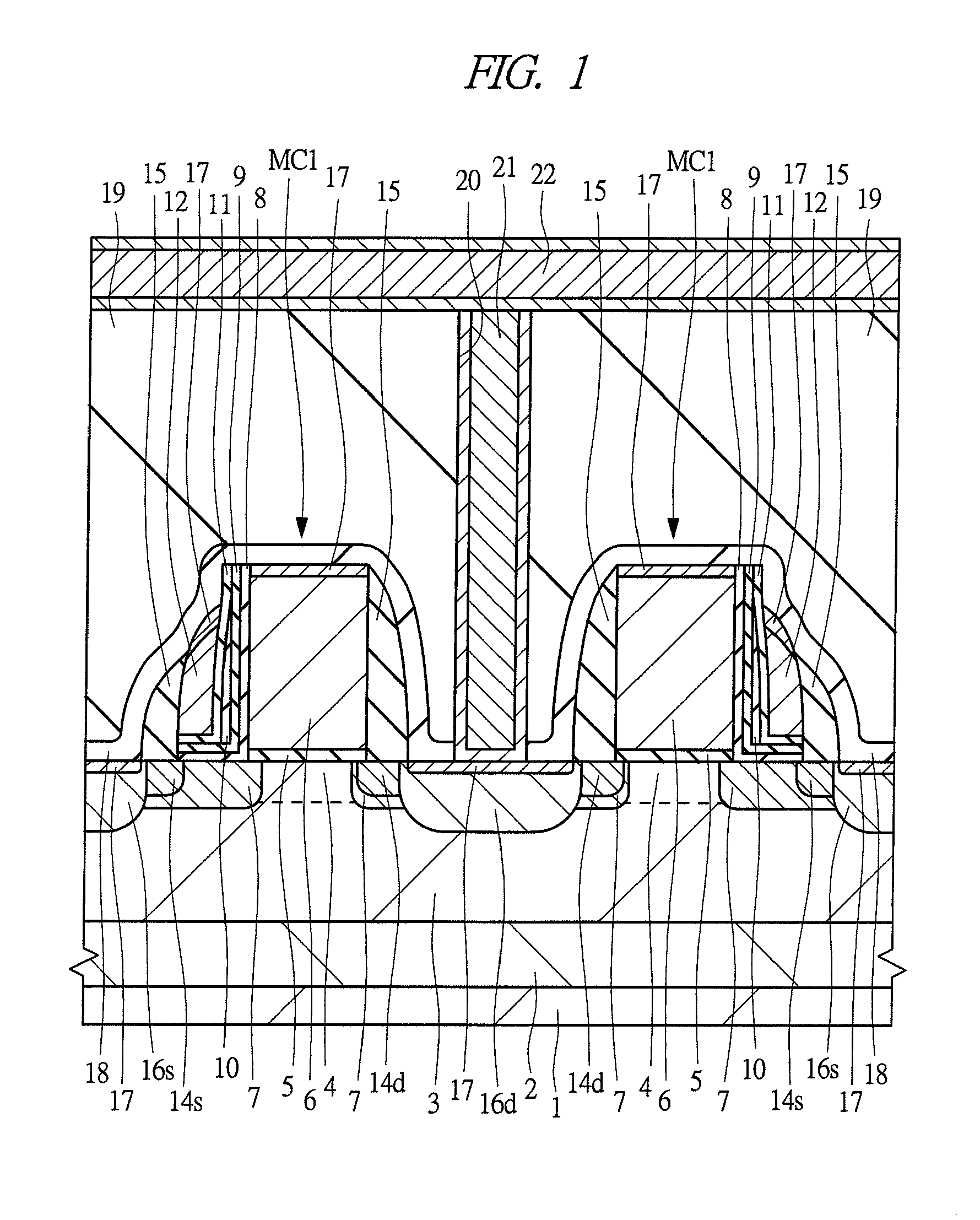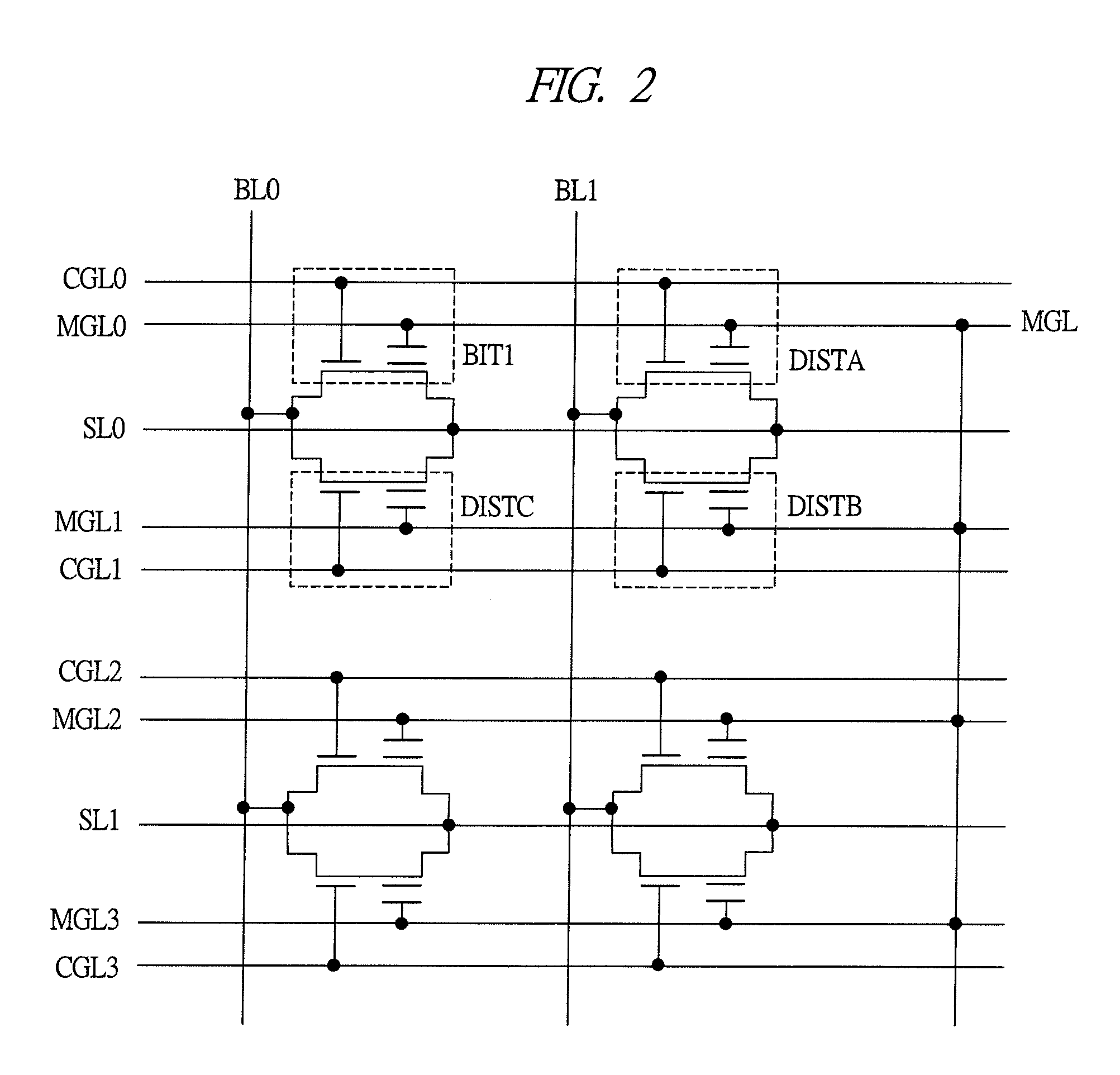Semiconductor memory device
- Summary
- Abstract
- Description
- Claims
- Application Information
AI Technical Summary
Benefits of technology
Problems solved by technology
Method used
Image
Examples
first embodiment
[0052]An example of a structure of a split-gate MONOS memory cell according to the first embodiment of the present invention will be described with reference to FIG. 1. FIG. 1 is a cross-sectional view of the principal part of the split-gate MONOS memory cells obtained by cutting the channels along a line crossing the memory gate electrodes.
[0053]As shown in FIG. 1, a semiconductor substrate 1 is made of, for example, p-type single-crystal silicon, and a p-well 3 containing a p-type impurity implanted therein is formed in an upper portion thereof. In an active region of a main surface (device formation surface) of the semiconductor substrate 1, an nMIS transistor for selecting a memory cell MC1 according to the first embodiment and an nMIS transistor for a memory purpose are disposed. The drain region and source region of each of the memory cells MC1 include relatively low-concentration n−-type semiconductor regions 14d and 14s and relatively high-concentration n+-type source and dr...
second embodiment
[0124]In the second embodiment of the present invention, an example of a manufacturing method of split-gate MONOS memory cells will be described. In the manufacturing method according to the second embodiment, a method of forming the upper-layer insulating films over the memory gate electrodes 12 is different from that of the first embodiment. The manufacturing method of the split-gate MONOS memory cells according to the second embodiment will be described with reference to FIG. 24.
[0125]After the selection gate electrodes 6 are formed as described above with reference to FIG. 16 in the first embodiment, the lower-layer insulating film 8 made of, for example, a silicon oxide film, the charge storage layer 9 made of, for example, a silicon nitride film and an upper-layer insulating film 10b made of, for example, a silicon oxide film are sequentially deposited over the main surface of the semiconductor substrate 1 as shown in FIG. 24. The lower-layer insulating film 8 is formed by an ...
PUM
 Login to View More
Login to View More Abstract
Description
Claims
Application Information
 Login to View More
Login to View More - R&D
- Intellectual Property
- Life Sciences
- Materials
- Tech Scout
- Unparalleled Data Quality
- Higher Quality Content
- 60% Fewer Hallucinations
Browse by: Latest US Patents, China's latest patents, Technical Efficacy Thesaurus, Application Domain, Technology Topic, Popular Technical Reports.
© 2025 PatSnap. All rights reserved.Legal|Privacy policy|Modern Slavery Act Transparency Statement|Sitemap|About US| Contact US: help@patsnap.com



